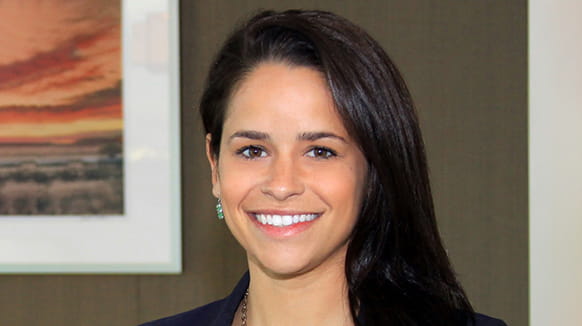Representations and warranties insurance (“RWI”), although a frequently used policy in corporate merger and acquisition (“M&A”) transactions, is much less commonly used in onshore upstream oil and gas acquisition and divestiture (“A&D”) deals. In A&D transactions where a seller is selling all of its assets or all of its assets in a particular basin (and in either case is effectively leaving the market) or has questionable credit, an often-heavily-negotiated point is both the degree to which a buyer will be entitled to any post-closing recourse, and whether a buyer will be provided security in the form of an indemnity escrow, a holdback of a portion of the purchase price, or otherwise for financial losses associated with a seller’s breach of its representations and warranties. This tension can be particularly acute when the market affords sellers negotiating leverage, enhancing the persuasiveness of sellers’ frequent insistence on a “clean exit” from any sale.
It is in these situations where RWI can be an attractive addition to the deal. Through the use of RWI, an insured buyer can potentially enhance its bid on assets by allowing a seller to “walk away” from the transaction post-closing, with the buyer still receiving important protection in the ability to recover any post-closing losses directly from the RWI provider pursuant to the policy (as opposed to the traditional negotiation of a post-closing indemnity right against the seller itself). Importantly, RWI also takes the place of a purchase price escrow (the need for which stems from concerns around the seller’s or its affiliates’ post-closing financial credibility), allowing the seller to receive the entirety of the purchase price at closing. As interest rates and general costs of funds have risen, the elimination of a purchase price holdback, or need for a seller to reserve funds on its balance sheet for contingent liabilities, is even more important today than in prior years of historically low interest rates.
Despite its historical lack of popularity compared with general M&A trends, 2024 may be the year of RWI in A&D deals. Last year’s decreased M&A deal volume may have inspired underwriters to pursue the A&D deal market more vigorously, thus increasing the pool of available insurers for RWI in A&D deals in the future. Many brokers and underwriters are hopeful that an increase in the use of RWI in A&D deals, together with the projected increase in deal volume for the year, will result in not only a correlating increase in the number of carriers with expertise in upstream deals, but also in the number of sellers that will insist on RWI in A&D transactions (and the number of buyers that will see it as a viable alternative to post-closing indemnity rights).
Presumably, motivated by the slower pace of M&A activity, insurers seem eager to diversify portfolios, underwriting in industries in which they have not previously been active. Specific to A&D transactions, insurers seem increasingly willing to cover important claims and damages, particularly concerning title and environmental matters, that were previously outside of the scope of many RWI policies. Some of the impetus for this expansion of the number of insurers in the A&D market may be driven by the combination of economic forces mentioned above as well as some increased information to allow for better risk assessment. While we note that the pool of A&D RWI policies remains relatively small, to date, brokers and underwriters with experience in A&D transactions have seen very few, if any, claims filed with respect to title or environmental matters. As a result, insurers seem willing to take on more risk by underwriting A&D RWI policies and specifically providing coverage with respect to title and environmental matters. Insurers have also sought to provide coverage on environmental matters but also hedge the perceived risk around underwriting such exposure by having the RWI policy serve as an excess liability policy in the case of certain environmental representations as discussed in greater detail below. Ultimately, until the industry sees more policies underwritten for A&D transactions, brokers and underwriters will not be able to determine patterns with respect to claim activity; however, to date the general lack of claims appears to be making underwriters more bullish on the sector than perhaps they once were.
As noted above, environmental representations and warranties are a specific area where the underwriting market has grown increasingly comfortable and willing to extend coverage. In the past, it was not uncommon for insurers to limit environmental coverage, if any, to regulatory representations and warranties. However, historically an A&D transaction buyer has maintained some post-closing recourse against a seller relating to environmental matters, even if limited. To reconcile the buyer’s need for post-closing protection and the seller’s demand for a “clean break,” insurance providers have become more flexible with respect to other environmental representations and warranties, including contamination provisions relating to the release or discharge of hazardous materials (notably subject to accepted exclusions and coverage limitations). This coverage is sometimes seen in the form of excess liability insurance, supplementing a party’s underlying pollution liability or other environmental coverage. In that instance, a party would first be required to exhaust their underlying primary environmental coverage before applicable RWI coverage could be triggered. The excess liability style of RWI in this context makes environmental coverage more palatable to insurance carriers.
When evaluating and underwriting an A&D transaction, insurers and their counsel will review the transaction agreement and corresponding documentation, focusing, in part, on the following areas:
- Level of Due Diligence: Utilizing RWI as part of a transaction is not a replacement for a buyer’s need to undertake usual and customary due diligence upon the assets being purchased. Indeed, when RWI is part of a transaction a buyer may find it necessary to undertake a greater level of due diligence on the target package as RWI insurers will include, as part of their underwriting process, a full understanding of the due diligence undertaken by the buyer and any information learned through that process. Thus, in order to secure a RWI policy with as few exclusions as possible, a buyer is well served by undertaking thorough due diligence on a significant sample size of the assets. Some insurers require satisfactory title information on at least eighty percent (80%) of the asset value of the wells being purchased. Although insurers are aware that a buyer will have its own landmen conducting title due diligence on the assets, RWI providers will often engage their own landmen, particularly with respect to potential special warranty of title claims. The duplication of review can sometimes create tension between a strategic buyer and underwriters. For example, an experienced buyer may be willing to bear risks and forgo due diligence for certain assets that an underwriter ultimately includes in its review processes, but because the buyer has excluded such assets from its own due diligence, representations and warranties applicable to such assets may be resultingly excluded from RWI coverage.
- Condition and Maintenance of the Assets and Reserve Estimation: Underwriters are particularly interested in the condition of the assets, including how well they have been maintained under the seller’s ownership, and often review the Phase I inspection reports and historical maintenance data and capital expenditures. Insurers also review the estimation of reserves.
- Industry-Specific Provisions: Insurers will review, and have become familiar with, certain representations and warranties that are customary for A&D deals, but not seen in traditional M&A transactions, such as payout balances, production payments, permitting and regulatory compliance. They will also review how the transaction documents address the title and environmental defect processes to understand, in part, how assets may be excluded from the deal after the purchase and sale agreement is signed. Additionally, insurers will note the thresholds and deductibles that must be met before a buyer can assert a title or environmental defect to confirm the transaction conforms with market standards.
Sellers and buyers interested in using RWI should note that the following items are often excluded from the RWI policy in an A&D transaction: (i) any type of representations and warranties that are forward-looking, (ii) any matters that are known or discovered during the buyer’s due diligence process (including title or environmental defects), and (iii) any items that are not subject to (or capable of) significant due diligence (whether by the buyer or insurer’s choice).
Although the current price of RWI, the added time to a transaction for insurers to underwrite a policy, and perceived scope of limitations may have deterred parties in the past from obtaining a RWI policy, as more insurers participate and compete in A&D transaction underwritings, these factors will likely evolve to the benefit of sellers and buyers. First, RWI premiums will hopefully continue to decrease to a level commensurate with those customarily seen in M&A transactions. It is not uncommon for a buyer to pay all costs associated with a RWI policy, but occasionally a seller and buyer may negotiate to share such costs equally. It is helpful for buyers to note that they may engage with a broker at no cost to confirm whether RWI would be available and at what cost, which a buyer could then consider when submitting a bid for a particular transaction or negotiating RWI cost-sharing with the seller.
Moreover, as more insurers compete to sell RWI policies, they may continue to reduce the time taken to underwrite and conditionally bind a policy (which ideally occurs at or before execution of definitive documentation with the issuance of the policy occurring at closing of the transaction). While the length of time involved in obtaining a conditional binder for a RWI policy will likely continue to vary depending upon the existing activity in the insurance market (e.g., how busy insurers are at the time, number of participating insurers in the market at such time, etc.), insurers have already shortened this time span from an average of four weeks to an average of two to three weeks. As more insurers compete for the A&D market, we expect to continue to see that time frame shorten. In order to best incorporate RWI into a transaction, sellers and buyers considering using RWI should engage counsel and advisors familiar with RWI policies for A&D transactions early in the process to ensure that the underwriting process can run in parallel with the transaction negotiation so that deal execution (and certainty) are not impacted negatively by waiting on the RWI policy to be conditionally bound.
As sellers look to sell out of investments or exit basins that are not core to their development strategies (and importantly, even absent those factors, continue to look for a “clean exit”) and buyers grow more comfortable with accepting the scope and coverages of RWI in A&D transactions, 2024 is poised to have increased RWI activity in the A&D market. Brokers and underwriters appear ready, willing, and able, but time will tell whether buyers and sellers in A&D deals have a meeting of the minds on the fundamental post-closing recourse structure and elect to engage them. Haynes Boone has advised on numerous transactions, both traditional M&A and upstream A&D, that have utilized RWI. With this expertise and strong relationships with brokers, Haynes Boone attorneys are available to assist should transaction parties consider incorporating RWI into their auction drafts, bids or negotiations.




